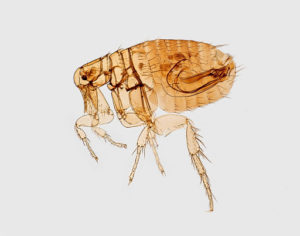
Taken together, our results suggest that enzootic plague is present and negatively impacting survival of northern Idaho ground squirrels and two coexisting species. Apparent annual survival increased for all three species on experimental flea-reduction plots compared to non-treated plots for the paired experiment but results were mixed for the non-paired experiment. In the plague vaccine experiment, vaccinated chipmunks had 4.65% higher apparent survival compared to chipmunks that received a placebo for intervals when the vaccine is believed to be effective. Furthermore, Experiments 2 and 3 tested the prediction that untreated, control animals should have lower survival than those in areas where fleas are experimentally removed or reduced because fleas are the main vector for plague. For Experiment 1, we hypothesized that if enzootic plague is present, vaccinated animals would have higher survival. We conducted three controlled and randomized field experiments to examine the effects of plague in northern Idaho ground squirrels and the two coexisting species: 1) a plague vaccine experiment, 2) a paired flea-reduction experiment, and 3) a non-paired flea-reduction experiment. Hence, enzootic plague may be one cause of rarity for northern Idaho ground squirrels but its effect on this threatened species has not been evaluated.

Columbian ground squirrels and yellow-pine chipmunks are more abundant and widespread than northern Idaho ground squirrels and both are known hosts for plague. The northern Idaho ground squirrel ( Urocitellus brunneus) is a threatened species which coexists with Columbian ground squirrels ( Urocitellus columbianus) and yellow-pine chipmunks ( Neotamias amoenus) throughout their restricted distribution in central Idaho. As a result, enzootic plague is much more difficult to detect because changes in population attributes are more subtle and Yersinia pestis prevalence is likely lower relative to epizootic plague outbreaks. We know much less about enzootic plague which causes less punctuated reductions in survival and abundance of infected populations.

Previous studies have focused on epizootic plague which causes acute mortality events and dramatic declines in local abundance. What prompted the closings? Someone found a dead rodent.Įl Dorado Vector Control collected the carcass from the visitor center on July 18 and sent it to the California Department of Public Health for processing and plague testing, Carla Hass, a spokeswoman for El Dorado County, said in an email.Plague is a non-native disease in North America that reduces survival of many mammals.

Early symptoms can include high fever, chills, nausea, weakness and swollen lymph nodes in the neck, armpit or groin. People can be exposed to plague through a bite from an infected flea, contact with an infected rodent, or exposure to an infected pet such as a sick cat. Department of Public Health (CDPH) that a chipmunk found last week at the. The visitor center is about three miles north from the city of South Lake Tahoe, Calif., in El Dorado County, which is east of Sacramento. Take Precautions Against Plague After Chipmunk Tests Presumptive Positive.

The closings affected the Taylor Creek Visitor Center and Kiva Beach, popular picturesque spots with nature trails near Lake Tahoe, and their parking areas, which will be closed through Friday and are likely to reopen this weekend. The basic advice: Keep yourself and your pets away from chipmunks, squirrels and other wild rodents that may carry fleas infected with the disease - and wait for the authorities to spray insecticide to kill the fleas.


 0 kommentar(er)
0 kommentar(er)
